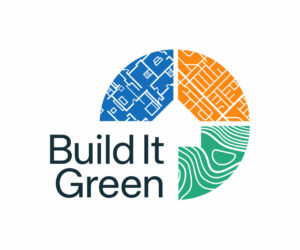
A new type of conversation between REALTORS® and their clients is changing the real estate industry before our eyes. As homebuyers browse Zillow listings and spend their Sundays visiting open houses, their agents are educating them to evaluate not just curb appeal and square footage, but also utility bill costs, comfort, and health. And homebuyers are listening.
In fact, 56 percent of REALTORS® say that their clients are at least somewhat interested in sustainability practices, and 61 percent of REALTORS® say they are comfortable answering clients’ questions about home performance. That’s from the REALTORS® and Sustainability 2017 Report, published in April by the National Association of REALTORS® (NAR). The report surveyed REALTORS® nationwide and found that professionals recognize that their industry is changing: Consumer demand is growing quickly for greener, healthier, and more resource and energy efficient homes, and being versed in green building fundamentals and energy efficiency upgrades is essential to being a successful agent.
REALTORS® don’t need to get BPI certifications, but they do need training to learn how to recognize smart opportunities. For example, that a green-certified home (GreenPoint Rated, LEED, etc.) or a home with low utility bills is likely to sell faster and sell for more—and that these features should be played up in a listing. Or that even middle-income buyers can take a fixer-upper with no insulation and an ancient furnace and transform it into a green performer, leveraging utility rebate programs and smart financing like FHA’s Energy Efficient Mortgage or Fannie Mae’s Homestyle Energy Loan. The bottom line: Today’s real estate pros need to be able to speak intelligently about the importance of energy efficiency and home performance, and how it affects the true cost of home ownership, comfort, health, ROI and resale value.
NAR recognizes this reality and that’s why the Sustainability 2017 Report is the first of what will be an annual benchmarking survey of its national membership. The annual survey will track a broad range of topics: agents’ insights into client needs, their ability to help clients with energy efficiency and sustainability, and the percentage of agents who have helped clients buy or sell a “green” property. The fact that in 2017 more than half of REALTORS® nationwide claim their clients have an interest in a greener home and community shows how sustainability has gone mainstream. What lags behind is the number of high-performance homes they encounter: In 2017, only 27 percent of agents said they were involved in one to five transactions with a property that had bona fide green features, a modest number with room for growth.
But in California the green real estate trend is on a fast track. Over the past five years, the nonprofit Build It Green has trained more than 1,200 California real estate professionals and helped them earn the NAR Green Designation certification. This two-day training teaches them everything from green building fundamentals to the landscape of energy rebates and financing, to using their green knowledge to market themselves and win new clients.
A crucial next step for these green-certified agents is to develop relationships with the right contractors. Agents are the trusted advisors to their homebuyer and seller clients. They connect them to a network of home professionals, from lenders and home inspectors to electricians and plumbers. Today, an agent’s network needs to include raters, green lenders, and home performance and HVAC contractors.
REALTORS® and contractors need to recognize that point of sale is an incredible opportunity to complete energy upgrades and bring a new level of investment in residential energy efficiency. Industry thought leaders like the nonprofits Elevate Energy and Build It Green lay out a vision for a “virtuous cycle” of green real estate investment. The cycle starts as a conversation between REALTOR and client, which leads to a referral to a contractor and then a whole-house upgrade. When that project is documented with a Home Energy Score or another score or green label, that data can be reflected in an MLS listing when the house eventually goes up for sale again. Consumer demand for an energy-saving home will fetch a higher selling price, and eventually more homeowners and home sellers will recognize the ROI of energy efficiency, driving further investments in energy upgrades.
As the NAR Sustainability Report makes clear, this virtuous cycle is starting to spin.
John Shipman is Senior Director of Real Estate Services at Build It Green. He is a licensed REALTOR® and sustainability educator who has trained more than 1,000 real estate professionals in green real estate and green building fundamentals. In 2014, the National Association of REALTORS® awarded him with its national Evergreen Award and named him its NAR Green Instructor of the Year.


Alex Coba
Communication Associate
As a proud California native from Stockton, Alex brings a wealth of experience and a versatile skill set. He has a solid communication background with a Bachelor of Arts in Journalism and Public Relations from California State University, Chico. Alex is adept at strategic communications and media relations, with experience gathering and sharing stories from his local communities that uplift the unique spirit and values of those places. He is excited to join Build It Green, where he can apply his talents to further BIG’s mission to help communities across California thrive